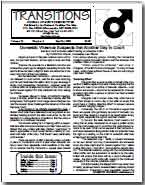
Stay-at-home dads are a growing legion. Photo: Getty Images
Stay-at-home dads aren’t really a mystery. They’re not wrapped in riddles. They shouldn’t be an enigma. They are, in fact, legion. A small, undermanned legion, to be sure, but growing in strength each year. If a modern mystery attends the dad who turns his back on full-time paid work for full-time baby wrangling, it’s his complete absence from this week’s election barney over paid parental leave.
Noted tax-and-spend socialist Tony Abbott proposes to rake billions of dollars from big business to pay for every Australian mum to stay home on full pay for six months after dropping her bundle.
Meanwhile, the tight-fisted scrooges of the ALP would condemn the nation’s lactating heroines to struggling along on a miserly welfare scheme of such wretched parsimony that it must surely scare thousands of young couples into never having sex again.
There are the usual suspect reckonings at the edges, of course. Abbott claims the average working mother will be 21 grand better off. The government points out the average working mum is not the chief executive of Yahoo and so will trouser far less, because the would-be PM is paying out the biggest baby bucks to those power-mums earning generous six figure salaries.
It’s a curious inverse of the set-to over the national broadband network, where the government is offering the rolled gold option and the opposition is saying the country can’t afford such indulgences. At least in that debate they’re staying in character. If cognitive shock at the prospect of cheering on Abbott as a champion of women’s rights is too much to handle, however, you could entertain the thought both sides are still getting their old-timey biases on by completely ignoring the growing number of dads who’ll be covered by this scheme. Covered, but not really considered.
We, the fathers of mothers’ group, the dads of the daily school pick-up and drop-off, the homemakers in our own very rough and masculine way, are an afterthought in all this. Both policies are framed in terms of mothers and their lost earning potential, which is understandable while the vast majority of at home care is still performed by mums. But that is increasingly changing and, correct me if I’m wrong, haven’t the last couple of decades been partly about trying to bring on that change? To convince men that they have more to offer than a pay packet, some footy training tips, and a stern presence when naughtiness and shenanigans threaten to get out of hand?
The two parties at least appear to have designed their competing programs with an open bias against the very idea of full-time fatherhood. Abbott’s scheme, for instance ”grants working mothers six months’ leave on their actual wage, capped at the $150,000 salary level. If the father is the primary carer, he will receive the parental leave payment at the mother’s salary.” It extends cover to same-sex couples, an enlightened policy for which he has received zero credit.
But if a man chooses to give up full time work after the birth of a child, why should the payment be based on his wife’s salary, rather than his own? It seems an inexplicable policy choice. Perhaps, in future, with female graduates outnumbering males, it will come to have a more equitable outcome, but for the moment it merely reinforces the idea that dad’s job is to find paid work, and mum’s is to raise the kids. If these policies are meant to rebalance the roles of men and women, and the demands of work and parenthood, both sides could have put more thought into checking their biases against the idea of the stay-at-home father.
There’s already more than enough to go around.
John Birmingham blogs at smh.com.au/comment & Brisbane Times and writes books at home during school hours.
Source: Daddy issues: Collective blind spot on parental leave pay is the mother of all slights (http://www.smh.com.au/comment/daddy-issues-collective-blind-spot-on-parental-leave-pay-is-the-mother-of-all-slights-20130819-2s7ag.html)


